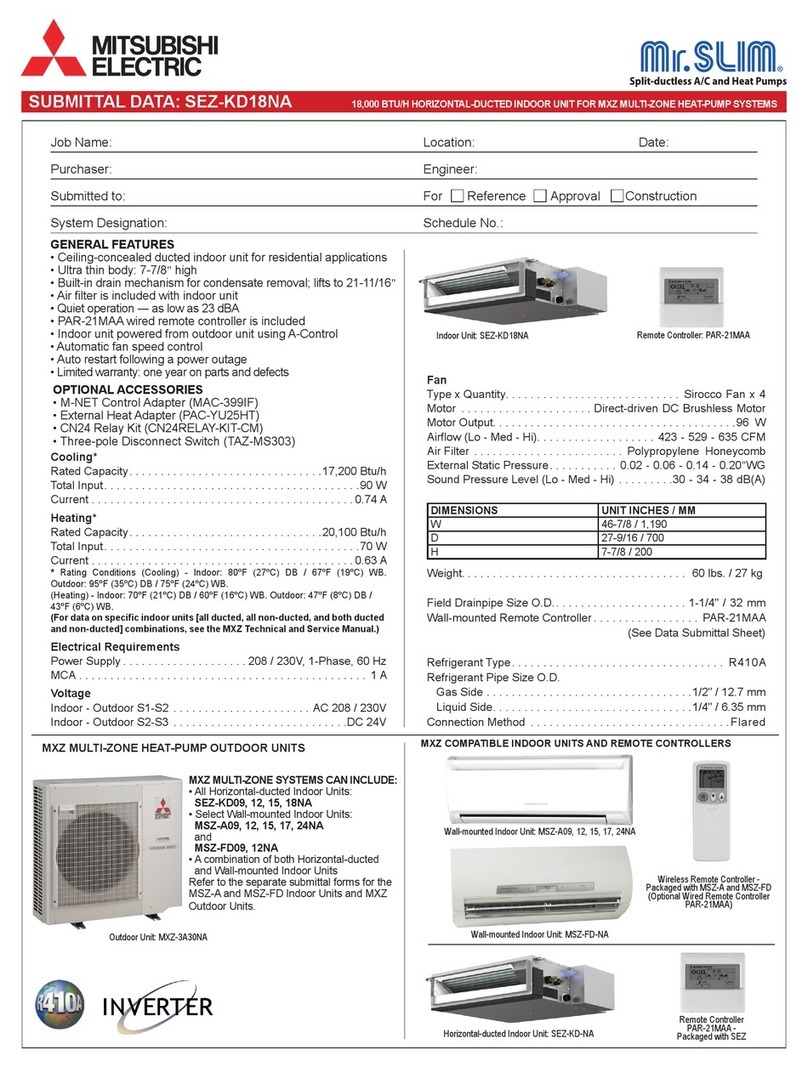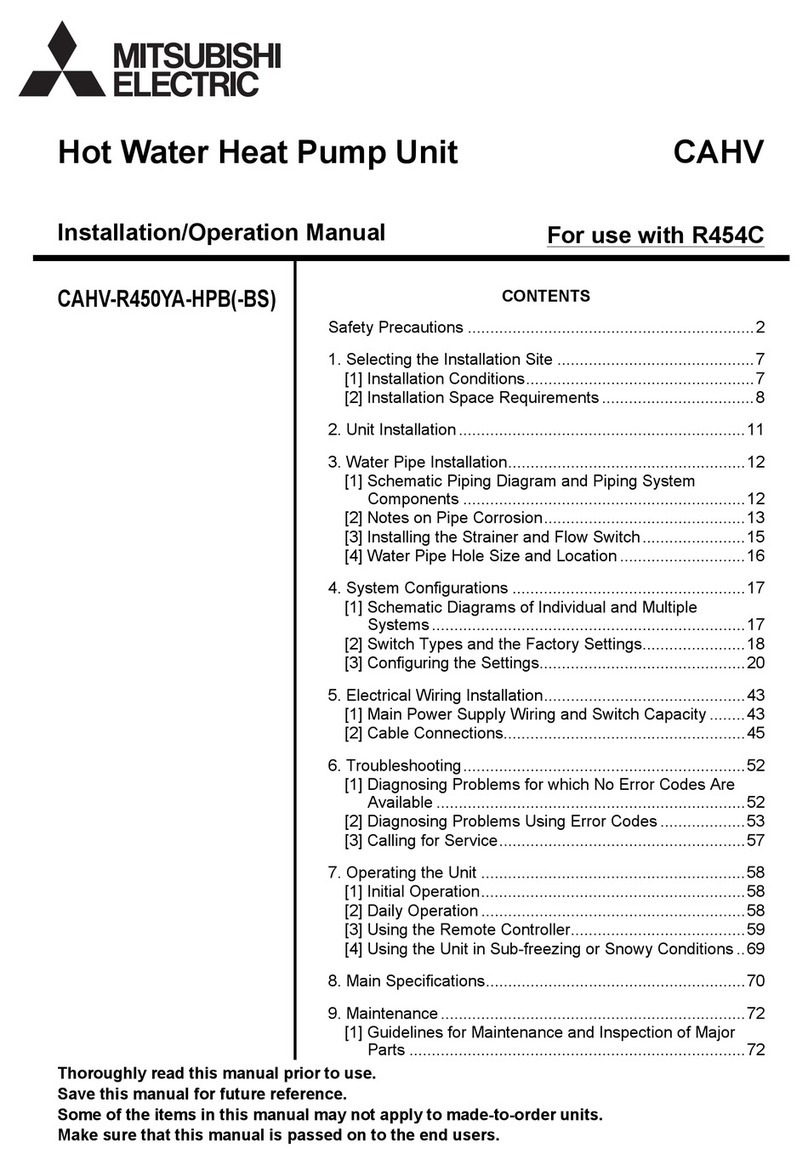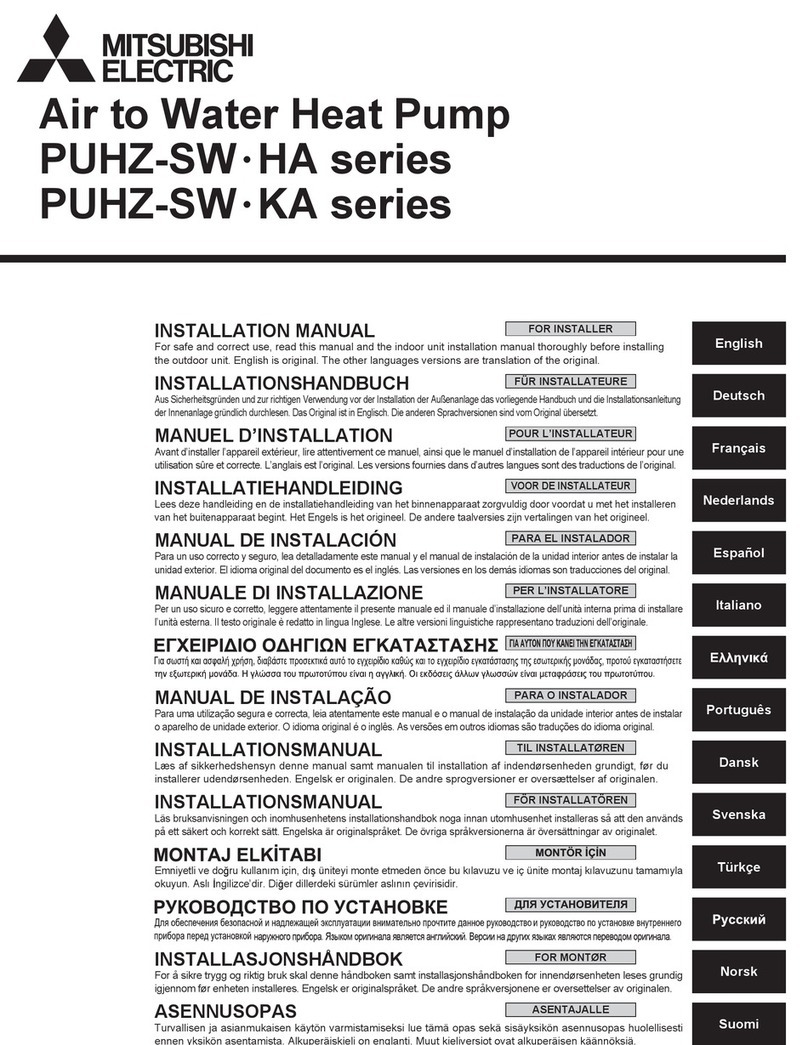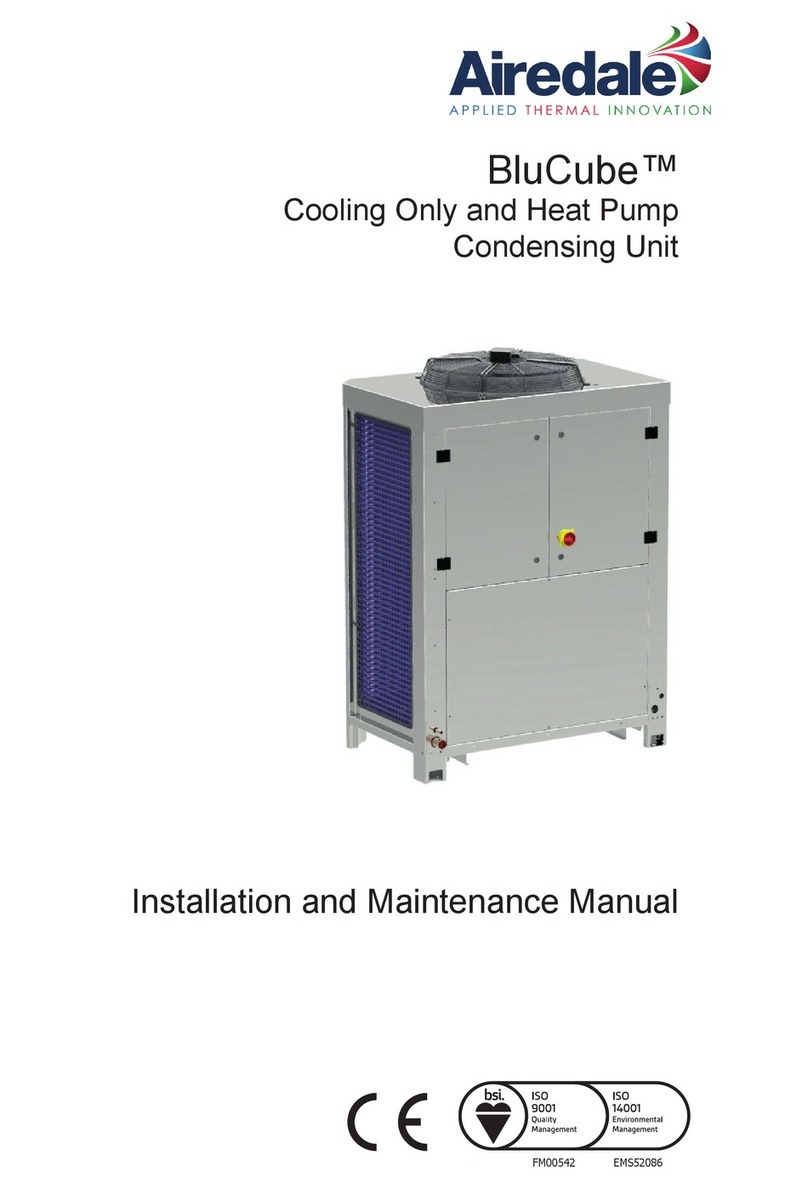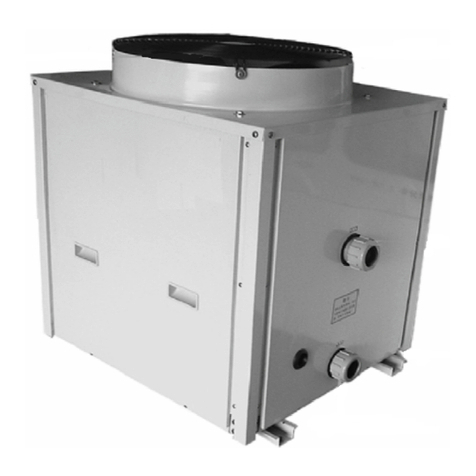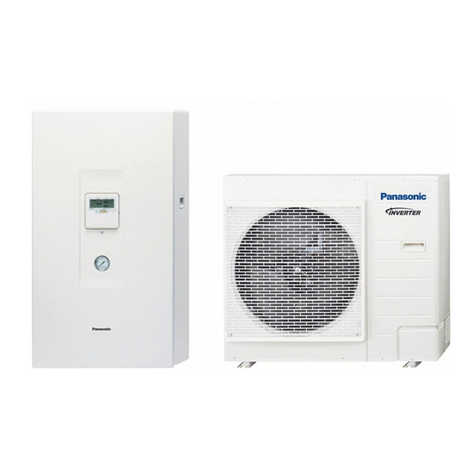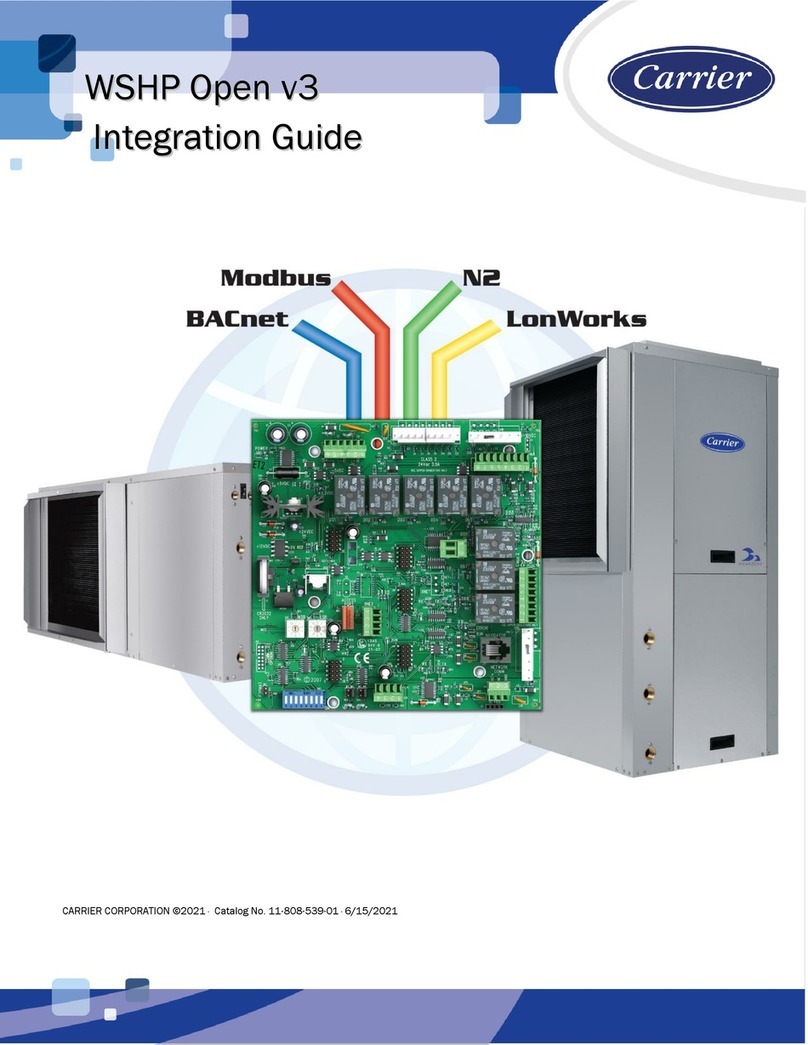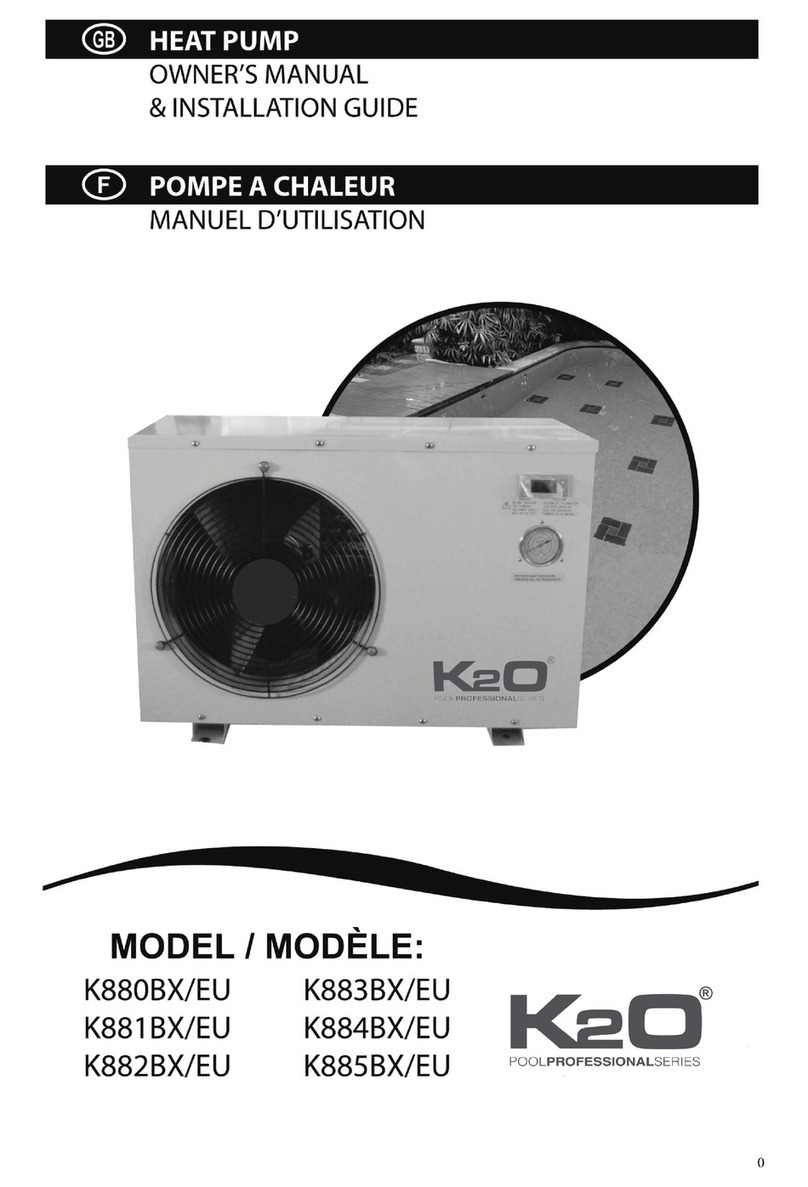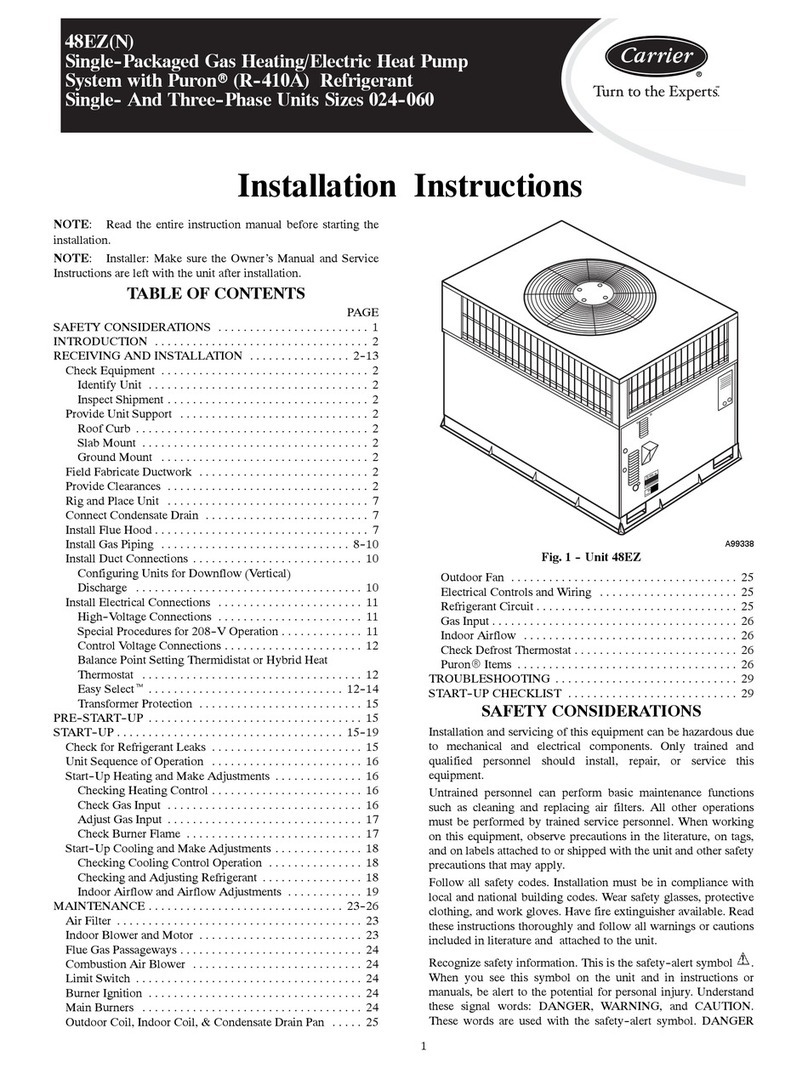
1
en
Contents
1. Safety precautions.....................................................................................1
2. Installation location....................................................................................2
3. Installing the indoor unit ............................................................................2
4. Installing the refrigerant piping ..................................................................4
5. Drainage piping work.................................................................................5
6. Electrical work ...........................................................................................5
7. Test run......................................................................................................9
8. Easy maintenance function ..................................................................... 11
1. Safety precautions
►Before installing the unit, make sure you read all the “Safety precautions”.
►Please report to your supply authority or obtain their consent before
connecting this equipment to the power supply system.
Warning:
Describes precautions that must be observed to prevent danger of injury or
death to the user.
Caution:
Describes precautions that must be observed to prevent damage to the unit.
After installation work has been completed, explain the “Safety Precautions,” use, and
maintenance of the unit to the customer according to the information in the Operation
Manual and perform the test run to ensure normal operation. Both the Installation
Manual and Operation Manual must be given to the user for keeping. These manuals
must be passed on to subsequent users.
:Indicates a part which must be grounded.
Warning:
Carefullyreadthelabelsafxedtothemainunit.
Warning:
• Ask a dealer or an authorized technician to install the unit.
• For installation work, follow the instructions in the Installation Manual and use
toolsandpipecomponentsspecicallymadeforusewithrefrigerantspecied
in the outdoor unit installation manual.
• The unit must be installed according to the instructions in order to minimize the
risk of damage from earthquakes, typhoons, or strong winds. An incorrectly
installed unit may fall down and cause damage or injuries.
• Donotaltertheunit.Itmaycausere,electricshock,injuryorwaterleakage.
•
The unit must be securely installed on a structure that can sustain its weight.
• If the air conditioner is installed in a small room, measures must be taken to
preventtherefrigerantconcentrationintheroomfromexceedingthesafety
limit in the event of refrigerant leakage. Should the refrigerant leak and cause
theconcentrationlimittobeexceeded,hazardsduetolackofoxygeninthe
room may result.
• Ventilate the room if refrigerant leaks during operation. If refrigerant comes
intocontactwithaame,poisonousgaseswillbereleased.
• Allelectricworkmustbeperformedbyaqualiedtechnicianaccordingto
local regulations and the instructions given in this manual.
• Useonlyspeciedcablesforwiring.
• Do not use intermediate connection of the electric wires.
• Theterminalblockcoverpaneloftheunitmustbermlyattached.
• Use only accessories authorized by Mitsubishi Electric and ask a dealer or
an authorized technician to install them.
• The user should never attempt to repair the unit or transfer it to another
location.
• After installation has been completed, check for refrigerant leaks. If refriger-
antleaksintotheroomandcomesintocontactwiththeameofaheateror
portable cooking range, poisonous gases will be released.
• When installing or relocating, or servicing the air conditioner, use only the
speciedrefrigerant(R410A)tochargetherefrigerantlines.Donotmixit
with any other refrigerant and do not allow air to remain in the lines.
Ifairismixedwiththerefrigerant,thenitcanbethecauseofabnormal
highpressureintherefrigerantline,andmayresultinanexplosionand
other hazards.
Theuseofanyrefrigerantotherthanthatspeciedforthesystemwill
cause mechanical failure or system malfunction or unit breakdown. In the
worst case, this could lead to a serious impediment to securing product
safety.
1.1. Beforeinstallation(Environment)
Caution:
• D
o not use the unit in an unusual environment. If the air conditioner is installed
inareasexposedtosteam,volatileoil(includingmachineoil),orsulfuricgas,
areasexposedtohighsaltcontentsuchastheseaside,theperformancecan
besignicantlyreducedandtheinternalpartscanbedamaged.
• Do not install the unit where combustible gases may leak, be produced,
ow,oraccumulate.Ifcombustiblegasaccumulatesaroundtheunit,reor
explosionmayresult.
• Do not keep food, plants, caged pets, artwork, or precision instruments in the
directairowoftheindoorunitortooclosetotheunit,astheseitemscanbe
damaged by temperature changes or dripping water.
• When the room humidity exceeds 80% or when the drainpipe is clogged,
water may drip from the indoor unit. Do not install the indoor unit where such
dripping can cause damage.
• Wheninstallingtheunitinahospitalorcommunicationsofce,bepreparedfor
noise and electronic interference. Inverters, home appliances, high-frequency
medical equipment, and radio communications equipment can cause the air
conditioner to malfunction or breakdown. The air conditioner may also affect
medical equipment, disturbing medical care, and communications equipment,
harming the screen display quality.
1.2. Before installation or relocation
Caution:
• Beextremelycarefulwhentransportingtheunits.Twoormorepersonsare
neededtohandletheunit,asitweighs20kg,44lbsormore.Donotgrasp
the packaging bands. Wear protective gloves as you can injure your hands
onthensorotherparts.
• Be sure to safely dispose of the packaging materials. Packaging materials,
such as nails and other metal or wooden parts may cause stabs or other
injuries.
• Thermal insulation of the refrigerant pipe is necessary to prevent condensation.
If the refrigerant pipe is not properly insulated, condensation will be formed.
• Place thermal insulation on the pipes to prevent condensation. If the drain-
pipeisinstalledincorrectly,waterleakageanddamagetotheceiling,oor,
furniture, or other possessions may result.
• Do not clean the air conditioner unit with water. Electric shock may result.
• Tightenallarenutstospecicationusingatorquewrench.Iftightenedtoo
much,thearenutcanbreakafteranextendedperiod.
1.3. Before electric work
Caution:
• Be sure to install circuit breakers. If not installed, electric shock may result.
• Forthepowerlines,usestandardcablesofsufcientcapacity.Otherwise,a
shortcircuit,overheating,orremayresult.
• When installing the power lines, do not apply tension to the cables.
• Be sure to ground the unit. If the unit is not properly grounded, electric shock
may result.
• Usecircuitbreakers(groundfaultinterrupter,isolatingswitch(+Bfuse),and
moldedcasecircuitbreaker)withthespeciedcapacity.Ifthecircuitbreaker
capacityislargerthanthespeciedcapacity,breakdownorremayresult.
1.4. Beforestartingthetestrun
Caution:
• Turn on the main power switch more than 12 hours before starting operation.
Starting operation just after turning on the power switch can severely damage
the internal parts.
• Before starting operation, check that all panels, guards and other protective
partsarecorrectlyinstalled.Rotating,hot,orhighvoltagepartscancause
injuries.
• Donotoperatetheairconditionerwithouttheairltersetinplace.Iftheair
lterisnotinstalled,dustmayaccumulateandbreakdownmayresult.
• Do not touch any switch with wet hands. Electric shock may result.
• Do not touch the refrigerant pipes with bare hands during operation.
• Afterstoppingoperation,besuretowaitatleastveminutesbeforeturning
offthemainpowerswitch.Otherwise,waterleakageorbreakdownmayresult.
01_VG79Y109H01_EN.indd 1 2019/07/11 16:20:18
